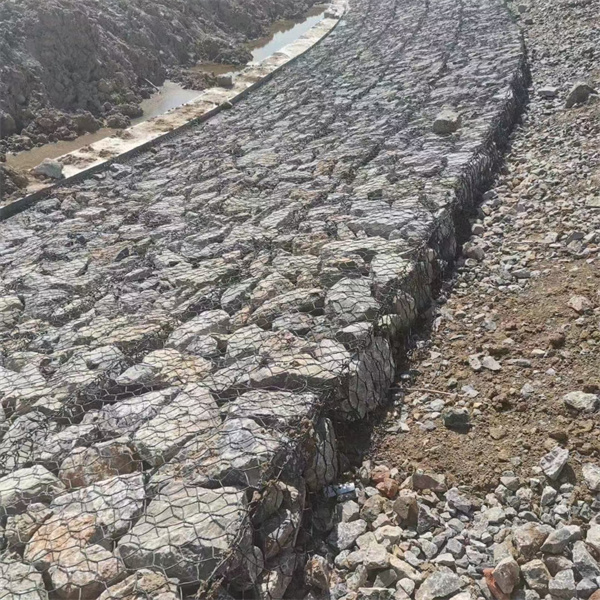Nov . 14, 2024 02:34 Back to list
china gabion headwall
Understanding the Importance of China Gabion Headwalls
Gabion headwalls have become an essential component in modern civil engineering and construction projects, particularly in China, where rapid urbanization and infrastructure development have surged in recent years. These structures, often made of steel wire mesh filled with stones, provide effective solutions for erosion control, drainage, and landscape design. This article explores the significance of gabion headwalls, their applications, and the benefits they offer, particularly in the context of Chinese infrastructure development.
What is a Gabion Headwall?
A gabion headwall is a structural device used at the end of a drainage channel or outlet, typically made from a series of interconnected gabion baskets filled with rocks or other weighty materials. The headwall serves several purposes it stabilizes the surrounding soil, controls water flow, and safely discharges water from the drainage system while minimizing erosion. The use of gabions as headwalls offers a durable and environmentally friendly alternative to traditional concrete structures.
Applications in China
In China, gabion headwalls are increasingly utilized in various applications, including stormwater management, riverbank stabilization, and landscape architecture. With the country facing challenges such as urban flooding, soil erosion, and the degradation of waterways, gabion headwalls provide a practical solution. They are particularly effective in managing runoff during heavy rainfall, a common concern in many Chinese cities.
Additionally, gabion headwalls play a crucial role in infrastructure projects. As new roads, highways, and bridges are constructed, these structures are integrated into the design to divert water away from pivotal areas, preventing damage and ensuring the longevity of these vital transport links. The flexibility of gabion design allows them to be tailored to various site conditions, making them suitable for diverse geographic locations across China.
Environmental Benefits
china gabion headwall

One of the standout advantages of gabion headwalls is their minimal environmental impact. Traditional concrete structures often require extensive excavation and can disrupt local ecosystems. In contrast, gabion headwalls are more forgiving, as they can be constructed with locally sourced materials, reducing transportation costs and carbon footprints. Moreover, the use of natural stones within gabions encourages the growth of vegetation, helping restore habitats for local wildlife and enhancing the aesthetic appeal of the landscape.
The porous nature of gabion walls also facilitates better drainage. This permits natural water flow and reduces the risk of water pooling, a significant improvement in managing water runoff and avoiding flooding in urban areas. Consequently, gabion headwalls contribute positively to local ecosystems while simultaneously addressing practical engineering needs.
Cost-Effectiveness and Durability
Gabion headwalls are not only environmentally friendly but also cost-effective. Compared to traditional concrete solutions, gabions are typically easier to install and require less specialized labor. This simplicity translates into lower construction costs and faster project completion. Once constructed, gabion headwalls are extremely durable and require minimal maintenance, ensuring long-term functionality.
The longevity of gabion headwalls is especially beneficial in regions prone to extreme weather conditions. For example, in the aftermath of heavy rains or floods, traditional infrastructures might suffer damage, necessitating costly repairs. However, gabion structures can withstand turbulent water flows more effectively, preserving their integrity and reducing future repair needs.
Conclusion
In summary, the utilization of gabion headwalls in China is a testament to innovative engineering solutions that blend functionality with environmental stewardship. As urban areas continue to grow, the demand for effective and sustainable infrastructure will only increase. Gabion headwalls offer a versatile and eco-friendly approach to managing water flow, controlling erosion, and enhancing landscapes. Their significant benefits—ranging from environmental restoration to cost savings—underscore their important role in the future of construction and civil engineering in China. As we look ahead, the continued adoption and adaptation of gabion technologies will undoubtedly contribute to more resilient and sustainable urban environments.
-
The Role of Galvanized Gabion Mesh in Riverbank Protection
NewsJun.26,2025
-
The Role of Gabion Basket Raised Bed in Sustainable Gardening
NewsJun.26,2025
-
Quality Assurance of Wire Mesh Gabion Baskets
NewsJun.26,2025
-
Installation Guide for Welded Gabion Box
NewsJun.26,2025
-
How to Choose the Right Gabion Box
NewsJun.26,2025
-
Different Types of Gabion Wire Mesh
NewsJun.26,2025
-
Why PVC Coated Gabion Mattress Is the Best Solution for Long-Term Erosion Control
NewsMay.23,2025






